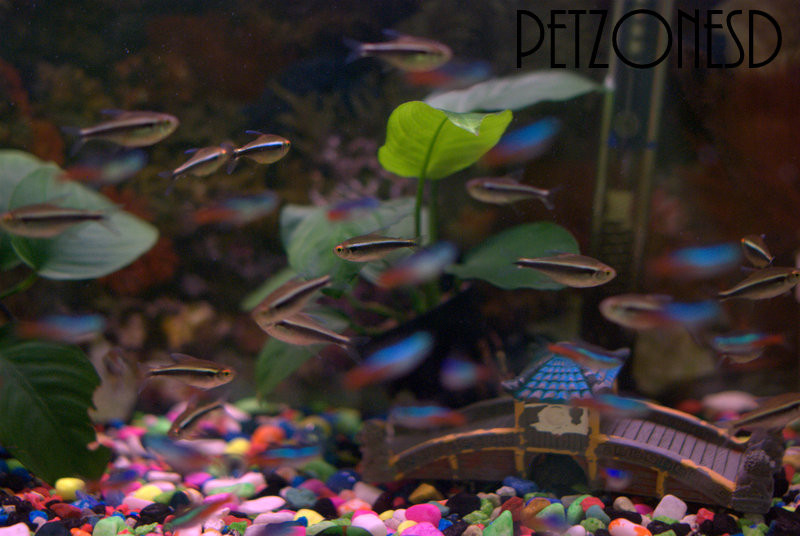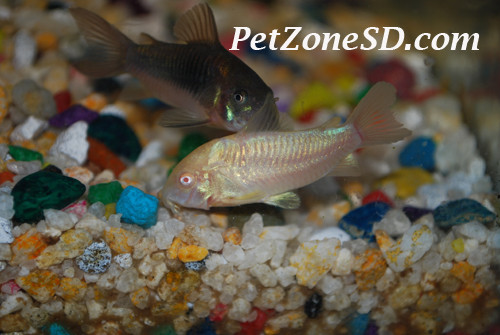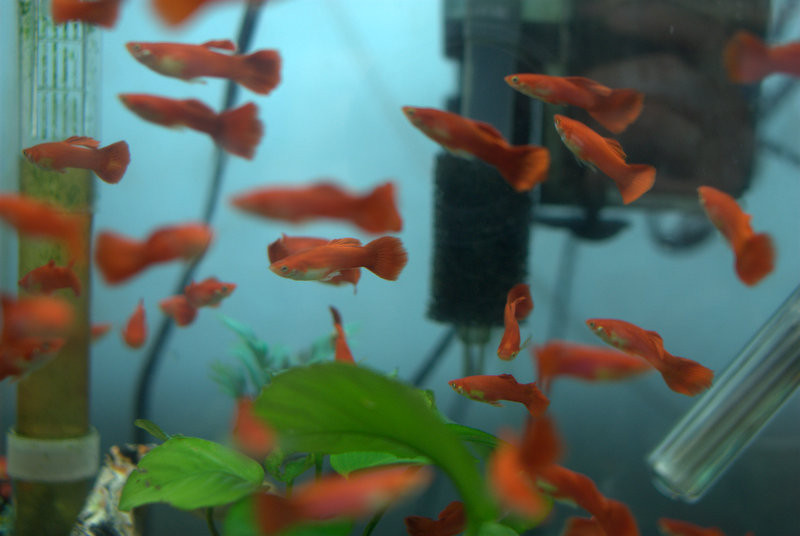How To Know Which Fish To Put Together In A Community Fish Tank?
Posted by Roger on on 28th Feb 2014
As a beginner in the fish keeping hobby, many people have that excitement when jumping into the decision to purchase a fish tank and start adding all sorts of fishes into the aquarium without first gaining the knowledge required to know which tropical fishes are compatible with each other and the different water requirements or fish food diets each need. This only calls for disaster and can make a fish keeping beginner have the worst first hand experience.
But it doesn't have to be this way! A simple rule of thumb when you first start out is to pick out fish that are relatively tolerable of changing water conditions and small in size. Many of the everyday common fish you see are quite adaptive to their water environment as they have been bred in fish farms for many generations and have become accustomed to changing conditions.
Good choices for community fishes for your aquarium would be danios, tetras, mollies, platies, guppies, cory catfish, common plecos, Angelfish (be careful if the fish is too small in comparison with the Angelfishes), just to name a few. These fishes do well together and will give you a full range of top, mid and bottom dwelling fish.
Many guppies, danios and tetras (along with mollies and platies/swordtails) are top dwelling fish. Typically as a rule of thumb, it is best to keep a school of these fishes together. For tetras or danios, a school of 6 or more is best to keep them from getting too timid of other tank mates. As for the mollies, platies and guppies (or most livebearer fish in general), 3 or so will usually do the job.

For mid dwelling tropical fish, some gouramis (do not put a true giant gourami into the tank) and Angelfish will do the job and typically stay within that range in your aquarium. 2 Angelfishes in one tank is usually okay, though some fish hobbyist would shoot for 4-5 or so. Same thing for the smaller sized gouramis.
As for bottom dwellers, cory cats (corydoras catfish) do well and stay small in size. They are good to add some activeness to the bottom of your fish tank and will help eat up the leftover fish food that has sunk to the bottom. Chinese algae eaters or the common pleco is also great as these fishes are also scavengers and will spend a lot of time on the bottom of the aquarium.

As for how many fishes you should add to one aquarium, the typical rule is about 1 inch of fish per gallon. Just be sure not to overcrowd your tank, as this will only put a strain not only on the other fishes (water gets dirty really fast) but also on yourself as you will have clean the aquarium much more frequently. This also gives the fishes much more room to freely swim around and have plenty of space.
Most of the time, the usual tropical fish food flakes or pellets will do the job for the majority of these community fish. Adding some bloodworms (dried, live or frozen works) helps as well to make their diet a little more varied.
If you are in doubt of whether one fish will get along with another, do not hesitate to ask us about the compatibility. We are always willing to give a helping hand in helping you select the right fish for your community fish aquarium! Email us at info@petzonesd.com or give us a ring at 619-283-1812 and we will be happy to assist you with our knowledge!
Continue to follow us on Facebook, Instagram and our blog for more updates!
Best Regards,


